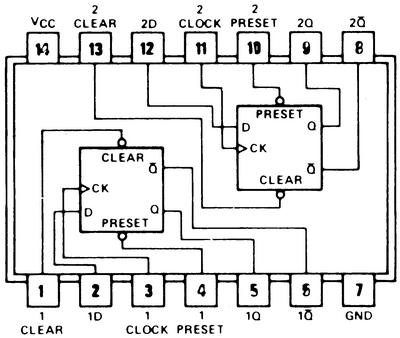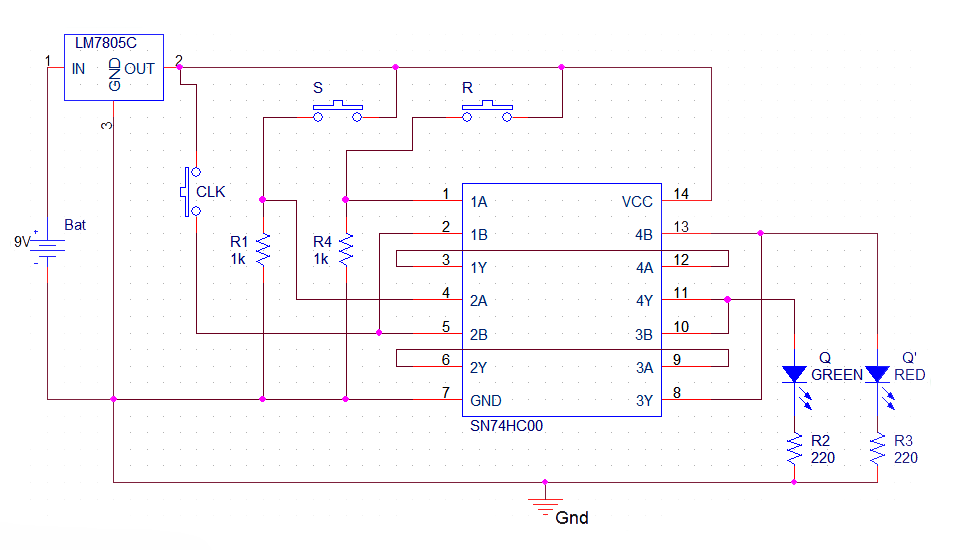The 74 series of integrated circuits (ICs) has been the backbone of digital electronics for decades, enabling the design of logic gates, flip-flops, counters, and other essential digital building blocks. Among the most popular variants are the 74HC and 74LS series, each optimized for specific applications based on their underlying technology and performance characteristics. This article explores their differences in construction, electrical parameters, and practical use cases, helping engineers select the right series for their designs.
Core Technology: What Sets Them Apart?
The primary distinction between 74HC and 74LS series lies in their semiconductor technology, which dictates their electrical behavior and suitability for different environments:
74LS Series: Short for "Low-power Schottky TTL," these ICs are based on Transistor-Transistor Logic (TTL). They use bipolar junction transistors (BJTs) with Schottky diodes to reduce switching time and power consumption compared to earlier TTL variants (e.g., 7400). Schottky diodes prevent transistor saturation, enabling faster switching speeds.
74HC Series: Short for "High-speed CMOS," these ICs are built on Complementary Metal-Oxide-Semiconductor (CMOS) technology. They use both P-channel and N-channel metal-oxide-semiconductor field-effect transistors (MOSFETs) to achieve high speed with minimal power consumption. CMOS technology is known for its high input impedance and low static power dissipation.
Key Electrical Parameter Comparison
The technological differences between 74HC and 74LS result in distinct electrical characteristics, summarized in the table below:
| Feature | 74LS | 74HC |
| Configuration | Low-power Schottky | High-speed CMOS |
| Speed | Faster than HC | Slower compared to LS |
| Compatibility | - | Compatible with LS inputs/outputs (HCT variant) |
| Power Consumption | - | Lower (HCT variant) |
| Logic Type | TTL (Transistor-Transistor Logic) | CMOS (Complementary Metal-Oxide-Semiconductor) |
| Input Handling | Allows open high-level inputs | Requires pull-up/pull-down resistors for open inputs |
| Pull-up/Pull-down | Strong pull-down, weaker pull-up | Balanced pull-up and pull-down strength |
| Operating Voltage | 5V only | Ranges from 2V to 6V |
| Signal Levels | TTL levels (0.8V low, 2.4V high) | CMOS levels (0.3V low, 3.6V high at 5V operation) |
| Driving Capability | 5mA high-level, 20mA low-level | 5mA for both high and low levels |
| Sensitivity to Static | Less sensitive | More sensitive, prone to static discharge and latching |
74LS: Strictly dependent on a 5V power supply (tolerance: ±5%). Deviations outside this range can cause malfunctions or damage, limiting their use in battery-powered devices with variable voltages.
74HC: Operates over a wide range (2V–6V), making them adaptable to low-voltage designs (3.3V) and legacy 5V systems. This flexibility is critical for modern electronics, where power efficiency and voltage diversity are priorities.
2. Power Consumption
74LS: Consumes significant static power (even when idle) due to continuous current flow in BJTs. Dynamic power (during switching) adds to this, making them unsuitable for battery-powered devices.
74HC: Has near-zero static power consumption (MOSFETs draw current only during switching). Dynamic power scales with frequency but remains much lower than 74LS at typical operating speeds. This makes 74HC ideal for portable electronics.
3. Speed and Propagation Delay
74LS: Offers a propagation delay of ~9ns at 5V, suitable for moderate-speed applications (up to ~50MHz).
74HC: Achieves ~7ns delay at 5V, with faster switching at higher voltages (e.g., 6V). While not as fast as high-speed TTL variants (e.g., 74F), 74HC meets the needs of most general-purpose digital circuits (up to ~100MHz).
4. Input/Output Characteristics
Input Impedance: 74LS has low input impedance (~10kΩ), which can load down signal sources (e.g., sensors, microcontrollers). 74HC, with its ~10<sup>12</sup>Ω input impedance, draws negligible current, making it suitable for interfacing with high-impedance sources.
Output Drive: 74LS can sink more current (8mA) than 74HC (4mA), making it better at driving heavy loads like LEDs or relays without external buffers. However, 74HC’s output is sufficient for most logic-level interfaces.
Noise Immunity: 74HC’s higher noise margins (due to CMOS logic) make it more resistant to electrical noise—critical in industrial environments or crowded PCBs with high electromagnetic interference (EMI).
5. Compatibility
74LS: Is TTL-compatible, meaning it works seamlessly with other TTL devices but requires level shifters to interface with CMOS circuits .
74HC: Is both TTL- and CMOS-compatible at 5V, simplifying mixed-technology designs. At lower voltages (3.3V), it interfaces directly with modern CMOS microcontrollers.
Circuit of the 74LS74
The figure below shows the internal logic diagram of a 74LS74 dual D-type positive edge-triggered flip-flop, highlighting the connections and functions of the clock, preset, and clear inputs across its pins.

Other 74LS Series ICs
Counters
74LS90: Asynchronous decimal counter, configurable for binary/decimal modes, with reset and set functions. Used in clock division and pulse counting.
74LS161: Synchronous 4-bit binary counter with synchronous reset and preset, high-frequency (~30MHz), suitable for digital frequency meters.
74LS163: Similar to 74LS161 but with synchronous reset, reducing glitches.
74LS192: Synchronous up/down decimal counter, with asynchronous reset and preset. Used in bidirectional counting (e.g., assembly line counting).
Registers
74LS174: 6-bit D flip-flop register with parallel input/output and reset. Used for data temporary storage.
74LS194: 4-bit bidirectional shift register supporting left/right shifts and serial-parallel conversion (e.g., UART communication).
74LS374: 8-bit D flip-flop register with tri-state output, suitable for bus data isolation (e.g., processor-peripheral interaction).
Encoders & Decoders
74LS148: 8-to-3 line priority encoder with higher-input priority. Used in keyboard scanning.
74LS47: BCD-to-seven-segment decoder driving nixie tubes, with blanking function (e.g., multimeter displays).
74LS138: 3-to-8 line decoder. Used for address decoding (e.g., memory addressing).
Multiplexers & Data Selectors
74LS151: 8-to-1 data selector, gating inputs via address lines. Used for multi-signal switching (e.g., sensor acquisition).
74LS153: Dual 4-to-1 selectors sharing address lines, suitable for parallel data selection.
Flip-Flops & Latches
74LS74: Dual D flip-flops with rising-edge triggering and asynchronous set/reset. Used in sequential circuits.
74LS75: 4-bit latch with high-level latching. Used for A/D output buffering.
74LS112: Dual JK flip-flops with falling-edge triggering, capable of counting and frequency division.
Arithmetic Logic Units & Comparators
74LS181: 4-bit ALU supporting 16 arithmetic/logic operations, core of early microprocessors.
74LS85: 4-bit magnitude comparator outputting "greater/less/equal". Used in data sorting.
Special Function Chips
74LS245: 8-bit bidirectional bus transceiver with direction control. Used for bidirectional bus transmission (e.g., processor-memory interface).
74LS259: 8-bit addressable latch, gating storage via address lines. Used for LED matrix driving.
Circuit of the 74HC00
The 74HC00 is a 14-pin integrated circuit housing four NAND gates, leveraging advanced CMOS technology. This configuration enables a speed akin to LS-TTL ICs while demanding lower power consumption. The figure below shows the schematic diagram of an SR flip-flop circuit using the 74HC00 NAND gate IC, complete with component values and connections for implementing set and reset functionalities.

Practical Applications: Choosing the Right Series
Choose 74LS When:
Driving Heavy Loads: Applications requiring high output current (e.g., LED arrays, small relays) benefit from 74LS’s stronger sinking capability.
Legacy TTL Systems: Upgrading or repairing older equipment (e.g., vintage computers, industrial controllers) that uses 5V TTL logic.
Moderate-Speed, 5V-Only Designs: Simple circuits like logic gates, counters, or multiplexers operating at 5V with no need for low-power operation.
Choose 74HC When:
Battery-Powered Devices: Low static power consumption makes 74HC ideal for portable electronics (e.g., remote controls, fitness trackers).
Low-Voltage Systems: Designs using 3.3V or 2.5V supplies (e.g., IoT sensors, embedded systems with ARM microcontrollers).
High-Noise Environments: Industrial controls, automotive electronics, or power systems where noise immunity is critical.
Mixed-Signal Designs: Interfacing with both TTL and CMOS components without level shifters (at 5V).
Common Misconceptions
Myth: "74HC is always better than 74LS."
Fact: 74LS excels in high-current, 5V-only applications. 74HC is superior in low-power, flexible-voltage scenarios.
Myth: "74LS is obsolete."
Fact: While 74HC is more popular in new designs, 74LS remains in production for legacy systems and specific high-current use cases.
Myth: "74HC can replace 74LS in all circuits."
Fact: 74HC may require external buffers to drive heavy loads that 74LS handles directly.
Conclusion
The 74LS series of integrated circuits, with their mature TTL technology and stable performance, hold an important position in digital circuit design. Although the CMOS-based 74HC series has gradually become the mainstream, the 74LS series remains irreplaceable in scenarios requiring high output current (such as driving heavy loads) or compatibility with legacy systems.
If you are looking for chips from this series for your new project, contact us for the latest quotes!









 Wishlist (0 Items)
Wishlist (0 Items) 